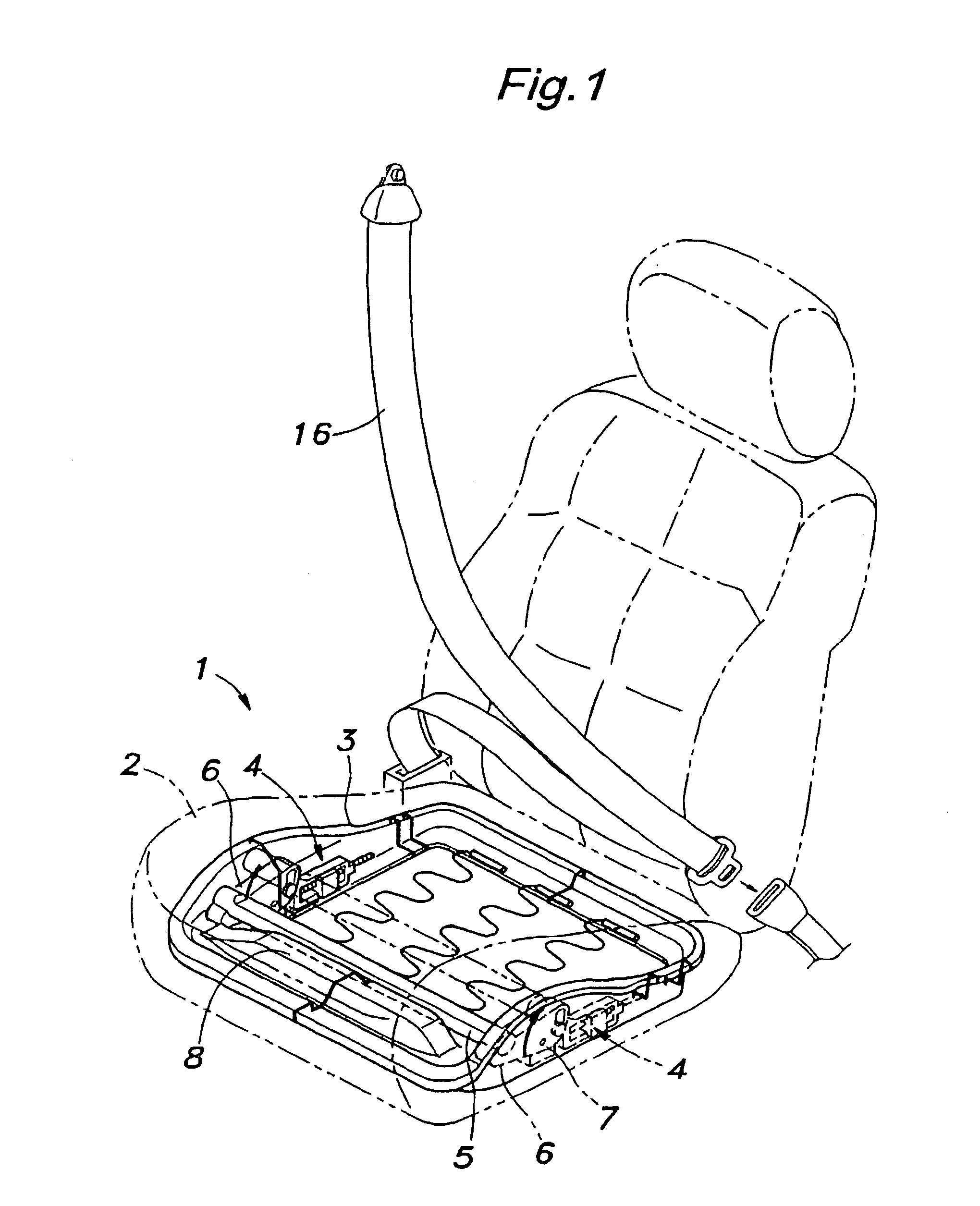Vehicle occupant restraint system
a technology for occupants and seats, applied in the direction of pedestrian/occupant safety arrangements, chairs, tractors, etc., to achieve the effect of rapid deploymen
- Summary
- Abstract
- Description
- Claims
- Application Information
AI Technical Summary
Benefits of technology
Problems solved by technology
Method used
Image
Examples
Embodiment Construction
[0023]FIG. 1 is a perspective view of a vehicle seat 1 embodying the present invention. The seat 1 comprises a seat bottom 2 made of plastic foam, and a rectangular dish-shaped seat frame 3 for supporting the lower part of the scat bottom 2. A pair of power actuators 4 are attached to either side wall of the seat frame 3 and form a part of a vehicle occupant restraint system. A restraining pipe member 5 extends laterally under an intermediate part of the seat bottom 2, preferably only slightly ahead of the longitudinally middle point of the seat bottom 2.
[0024]A pair of arm members 5 are attached to the corresponding ends of the restraining pipe member 5, respectively. As best shown in FIG. 2, an intermediate point of each arm member 6 is pivotally attached to a gear box 7 via a pivot shaft 7b. As will be described hereinafter, the gear boxes 7 are slidably attached to the seat frame 3 although it is not shown in the drawing. Thus, the restraining pipe member 5 can move vertically a...
PUM
 Login to View More
Login to View More Abstract
Description
Claims
Application Information
 Login to View More
Login to View More - R&D
- Intellectual Property
- Life Sciences
- Materials
- Tech Scout
- Unparalleled Data Quality
- Higher Quality Content
- 60% Fewer Hallucinations
Browse by: Latest US Patents, China's latest patents, Technical Efficacy Thesaurus, Application Domain, Technology Topic, Popular Technical Reports.
© 2025 PatSnap. All rights reserved.Legal|Privacy policy|Modern Slavery Act Transparency Statement|Sitemap|About US| Contact US: help@patsnap.com



